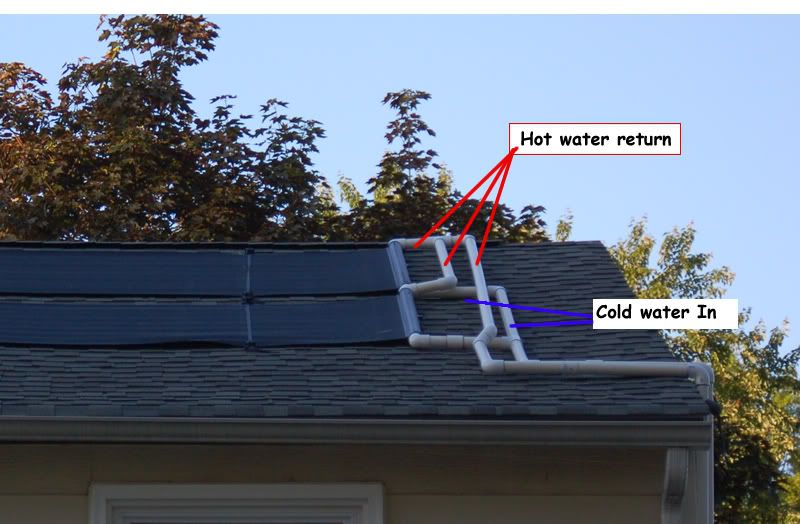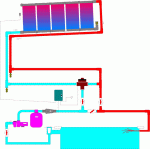- Apr 26, 2008
- 20
Hello -
I just finished plumbing a couple of solar panels on the roof. For the sake of a sanity check, is this plumbed correctly? These are 4x20 Solar Bear Panels. So the supply and return are both on the same side. I plumbed them parallel but with a slight deviation that I read about in another thread.
Instead of the return from the 1st panel going directly back to the main return line, I plumbed it up to Tee into the 2nd (top) panel's return line. Is this correct? Also, am I okay using a straight/ 90 degree Tee versus a Wye that directs the water to the way I want it to flow?
I had a few leaks that I saw and quickly fixed. However, there is still air getting the system as the return line is bubbling. I don't see any more leaks on the roof portion. Should I care? I haven't seen the water level of the pool drop at all. If so, how do I locate the leak? There couldn't still be air in the panels after a day of running them right?

Thanks,
Rich
I just finished plumbing a couple of solar panels on the roof. For the sake of a sanity check, is this plumbed correctly? These are 4x20 Solar Bear Panels. So the supply and return are both on the same side. I plumbed them parallel but with a slight deviation that I read about in another thread.
Instead of the return from the 1st panel going directly back to the main return line, I plumbed it up to Tee into the 2nd (top) panel's return line. Is this correct? Also, am I okay using a straight/ 90 degree Tee versus a Wye that directs the water to the way I want it to flow?
I had a few leaks that I saw and quickly fixed. However, there is still air getting the system as the return line is bubbling. I don't see any more leaks on the roof portion. Should I care? I haven't seen the water level of the pool drop at all. If so, how do I locate the leak? There couldn't still be air in the panels after a day of running them right?

Thanks,
Rich


